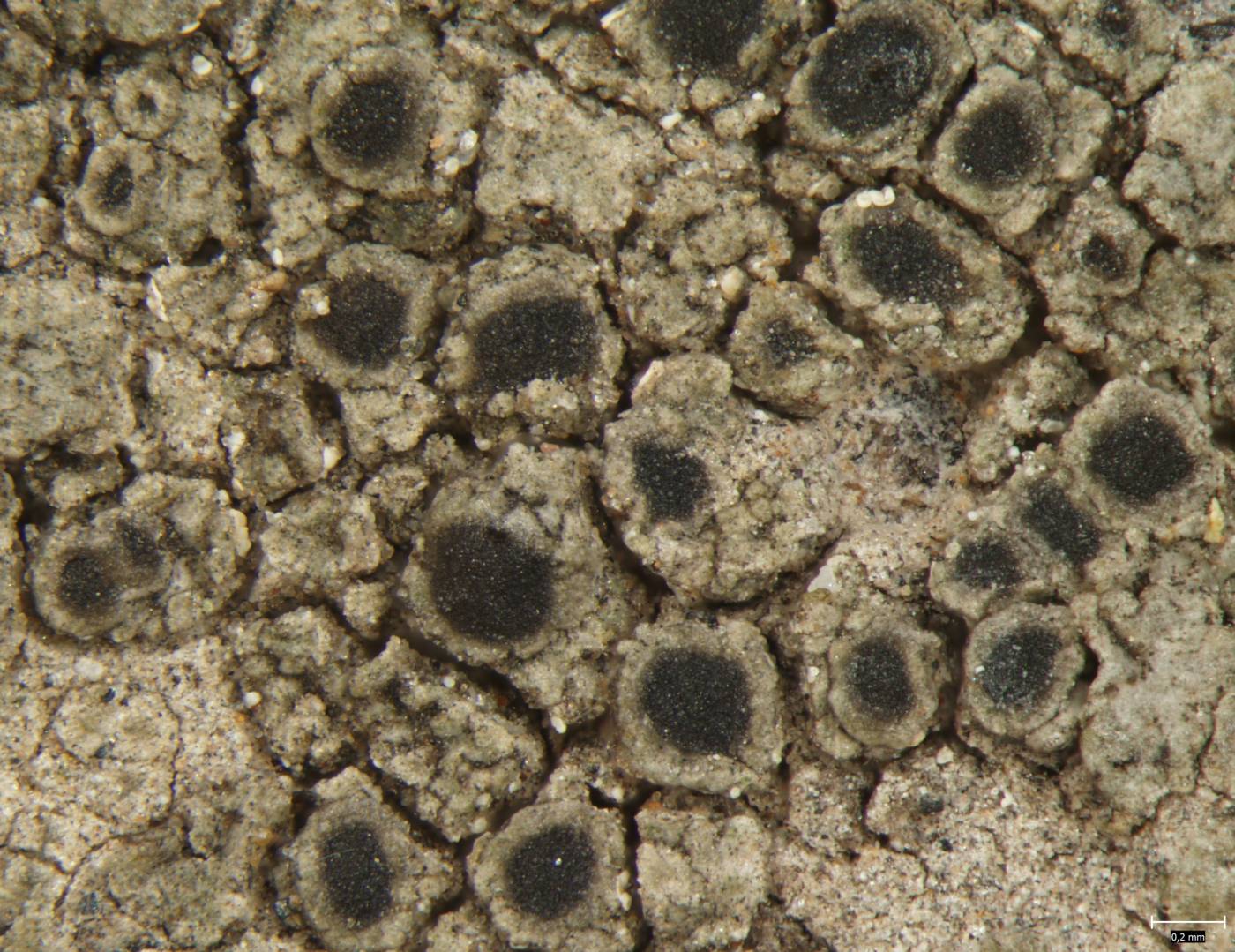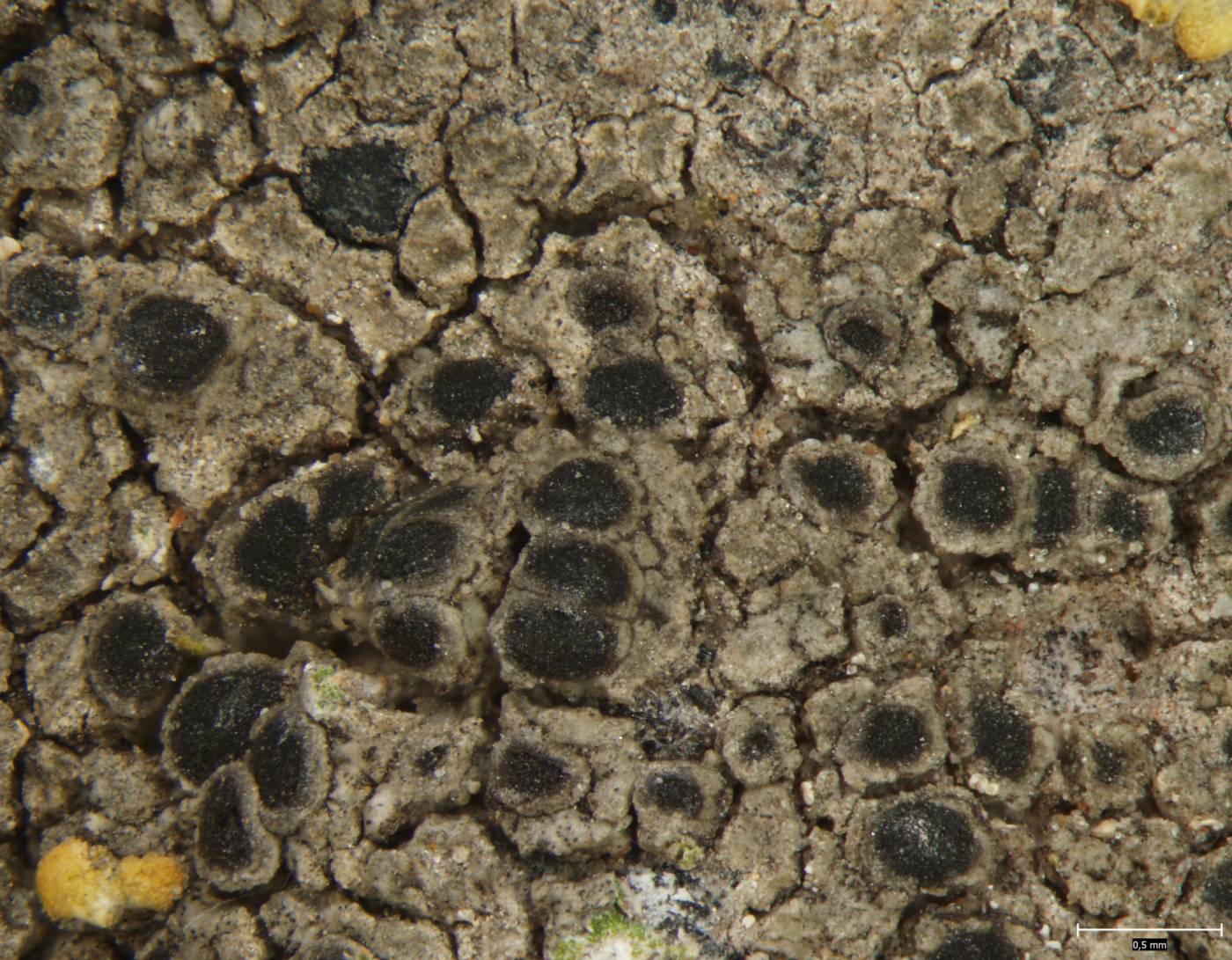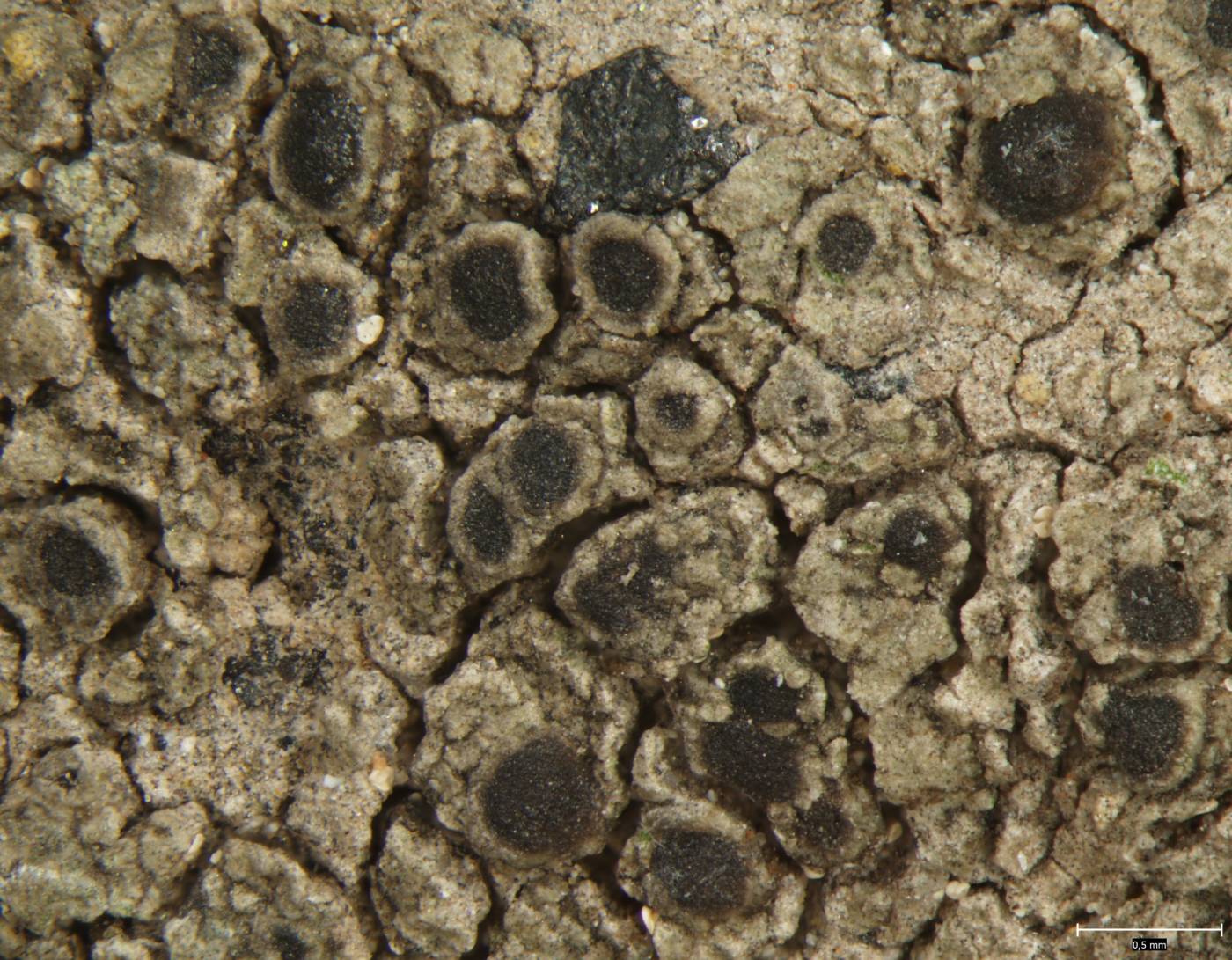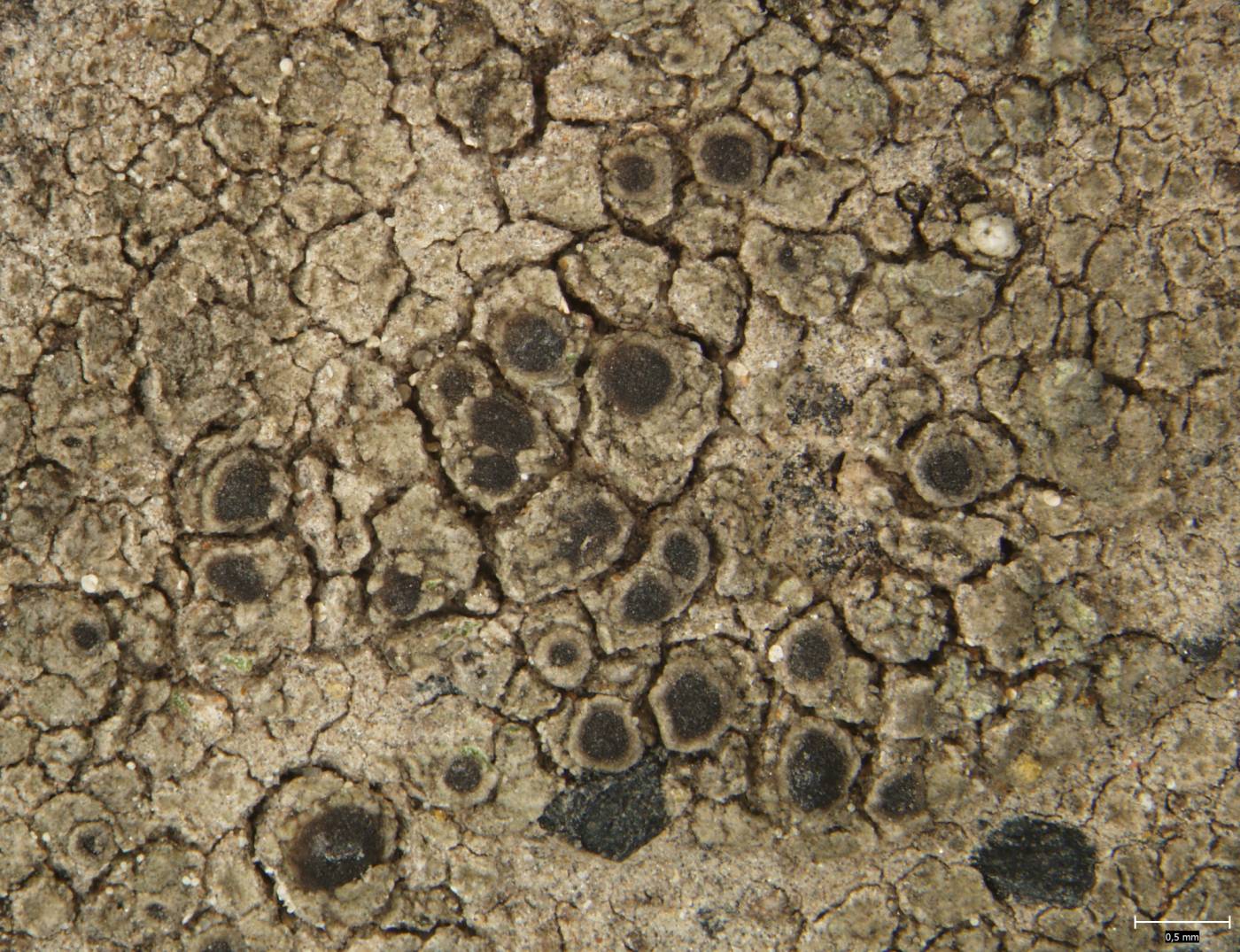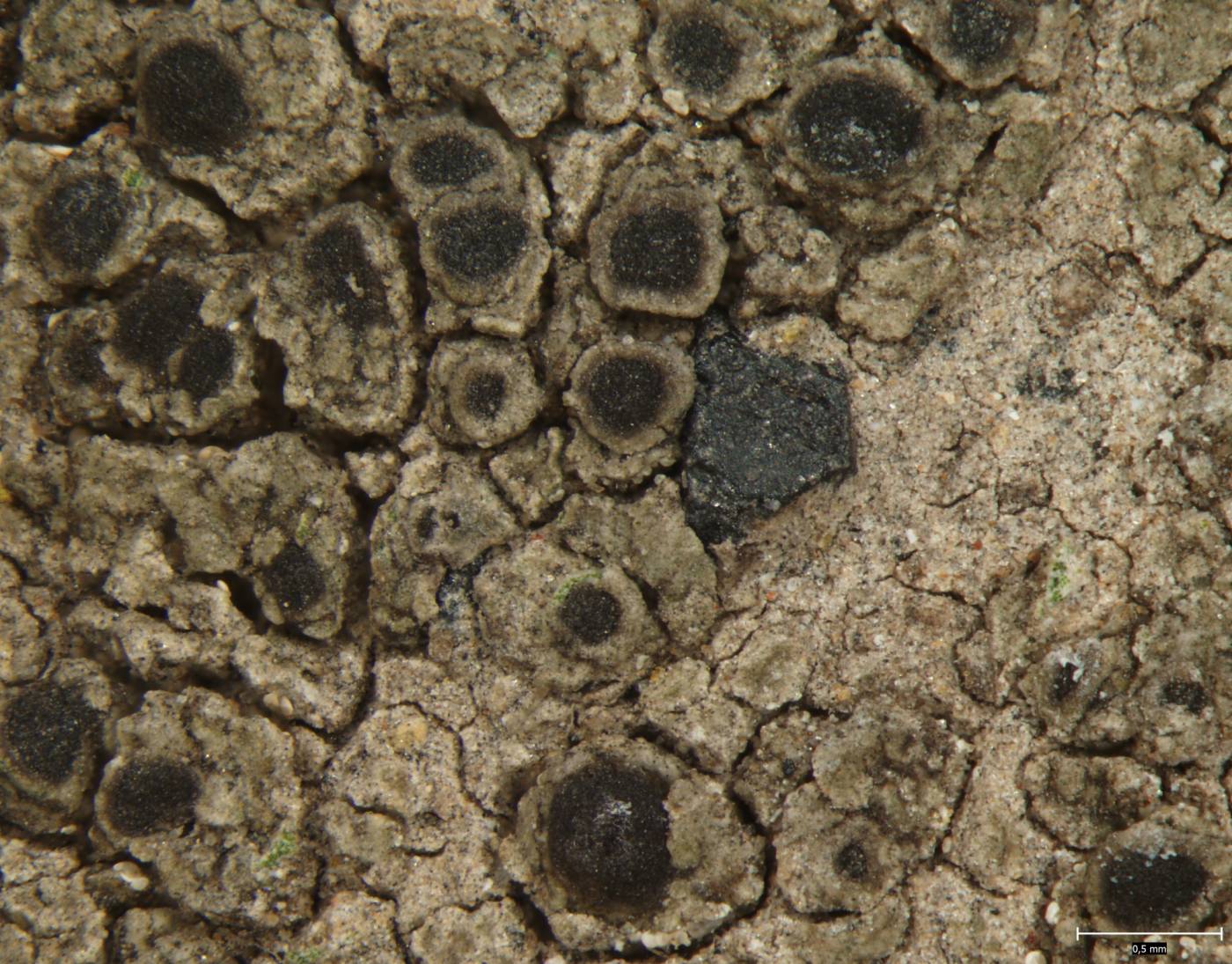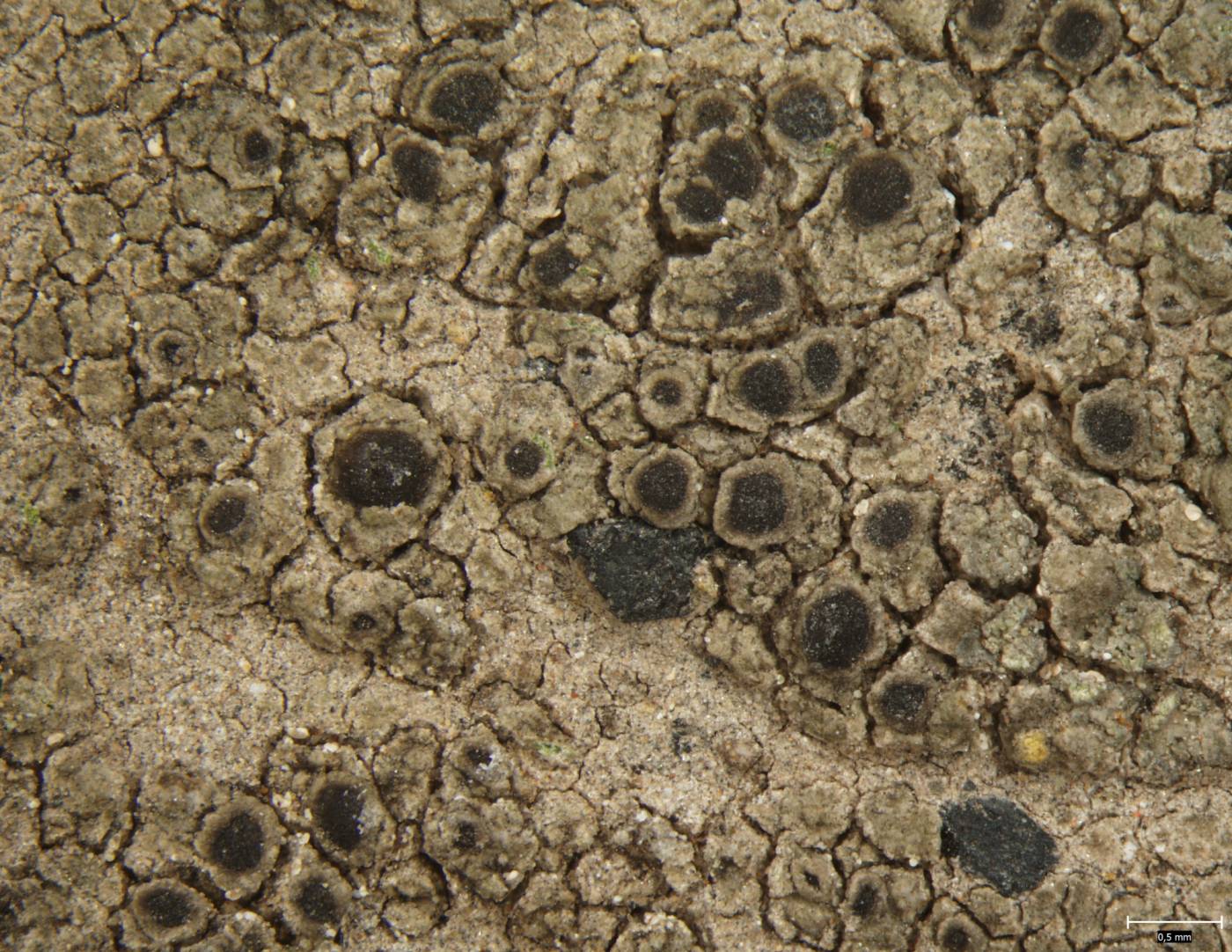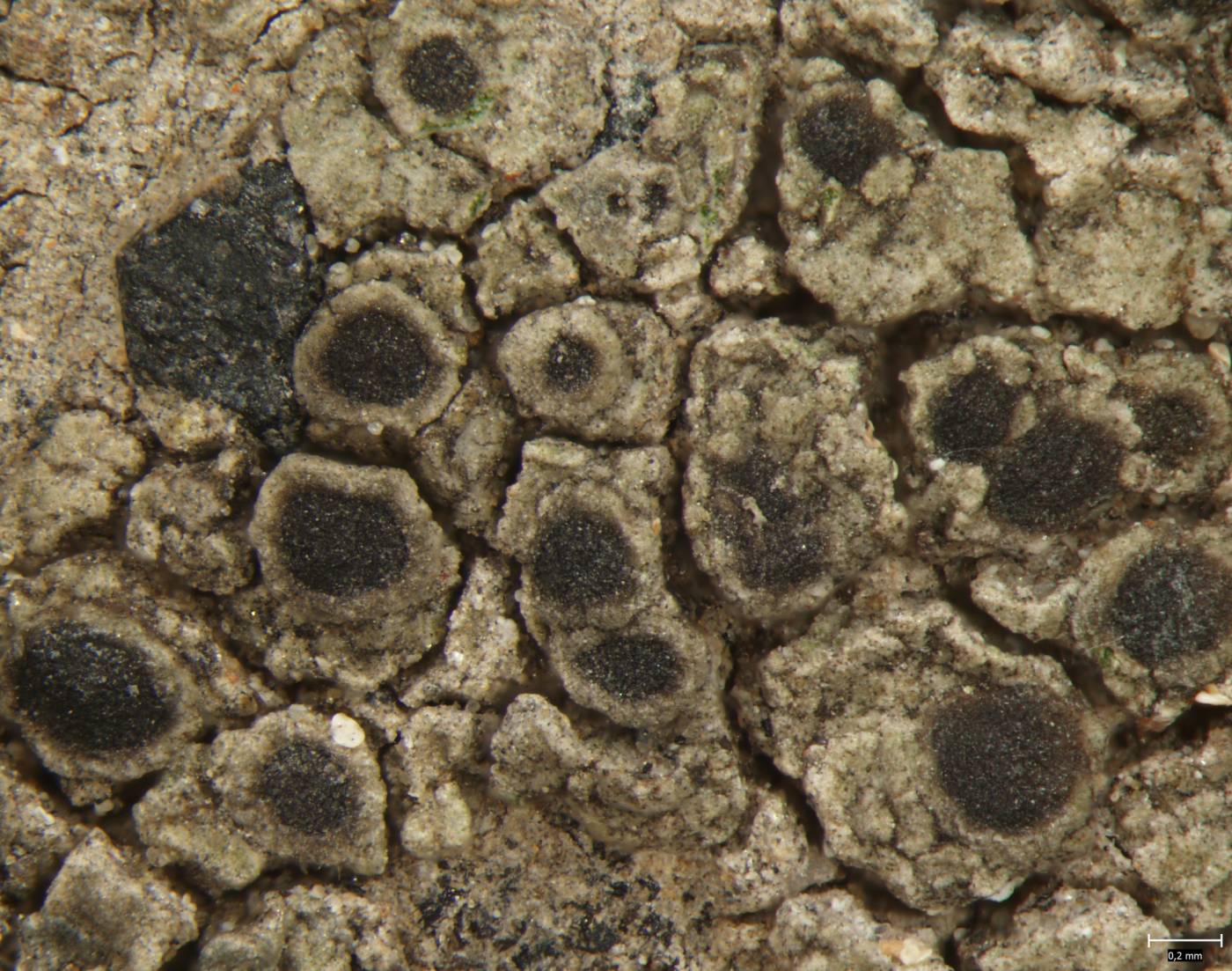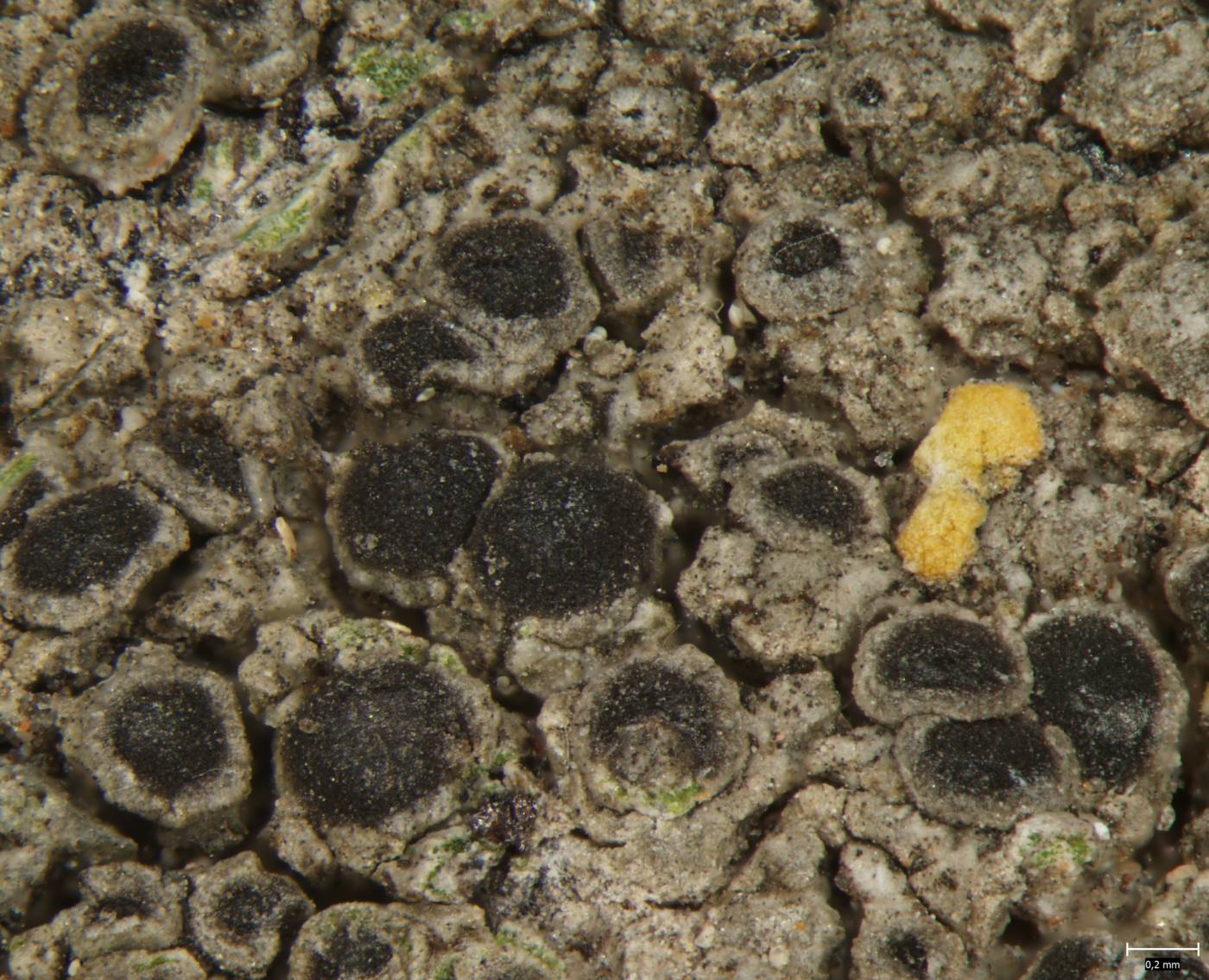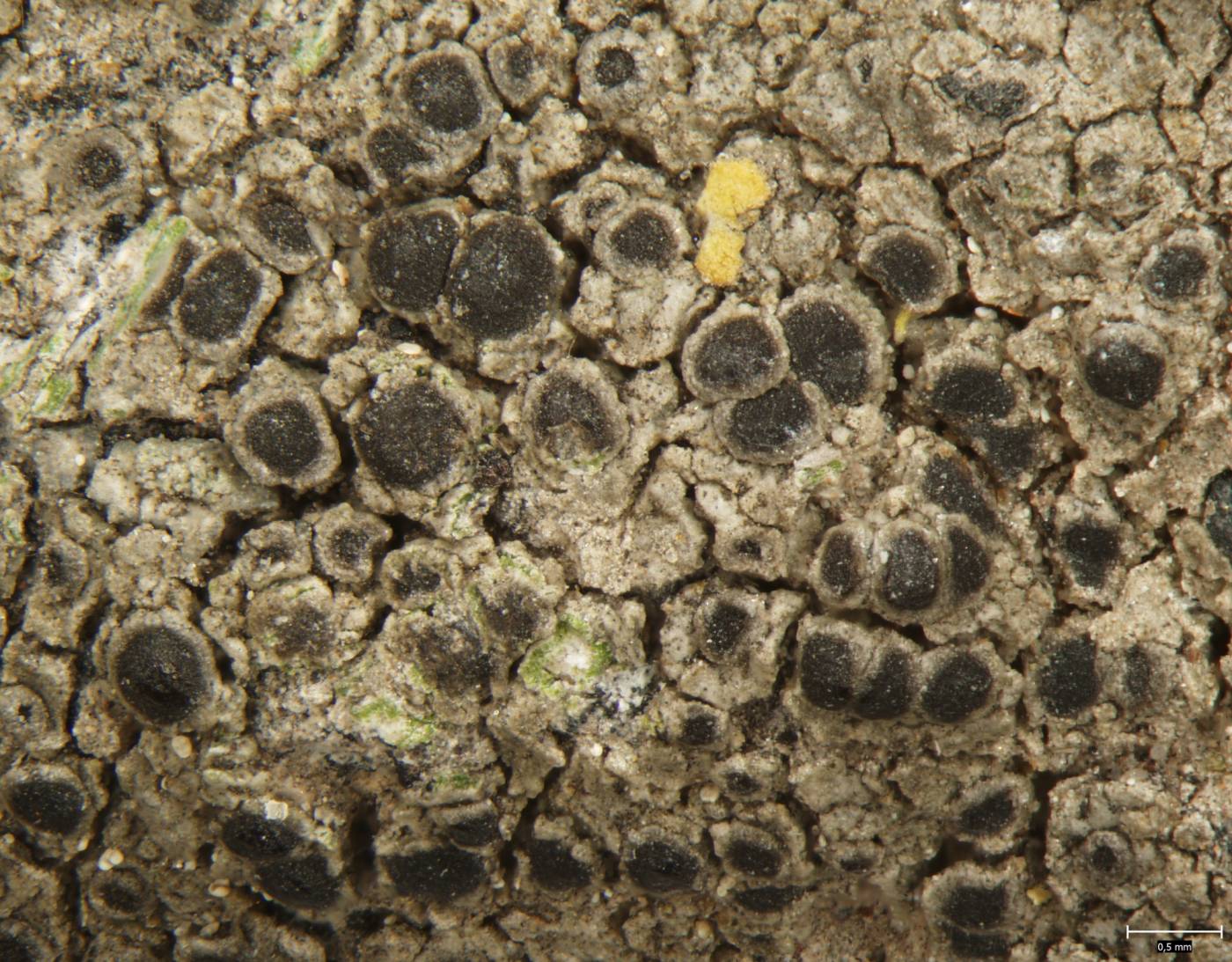A minute Rinodina with a thin grey thallus and usually numerous lecanorine apothecia. It has characteristic spores; they are small, widely oval, conspicuously enlarged around the septum after application of KOH (Dirinaria type). It includes two ecotypes, distinguished as separate species by some authors. One of them, R. gennarii, grows on rocks, stones and other inorganic substrates while the other one, R. oleae, is epiphytic. Here, we consider the ecotypes conspecific, because the epiphytic occurrences apparently represent colonizations of alternative substrates (dusty bark at the bases of solitary trees) by otherwise a saxicolous lichen.
Rinodina oleae is rarely found epiphytic in the Czech Republic; there are isolated records on dusty tree bark in communities of other typically saxicolous lichens, such as Caloplaca flavocitrina. All over the area of the Czech Republic, it usually occurs on rocks and concrete at anthropogenic sites, such as castle ruins. It can rarely be found on natural substrates, e.g., on calcareous sandstones or basic extrusive rocks. It is a part of communities of nitrophilous lichens, together with Caloplaca chlorina, C. flavocitrina and C. holocarpa. Contrary to other Rinodina species, it tolerates shading.
taxonomic classification:Ascomycota → Lecanoromycetes → Caliciales → Physciaceae → Rinodina
most frequented synonyms:Rinodina gennariiRed List (Liška & Palice 2010):LC – least concern
Red List (Malíček 2023):DD – data deficient
Occurrence in the Czech Republic
All records: 46, confirmed 33. One click on a selected square displays particular record(s), including their source(s).
